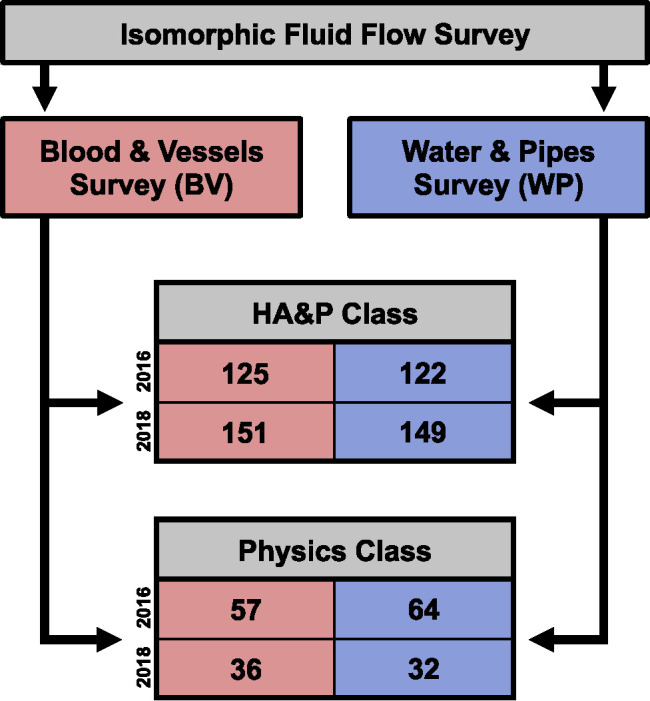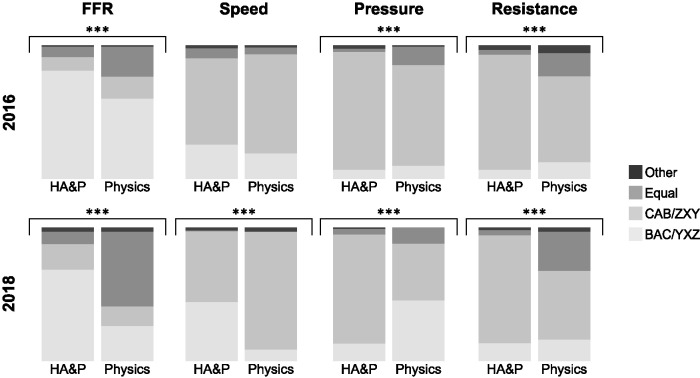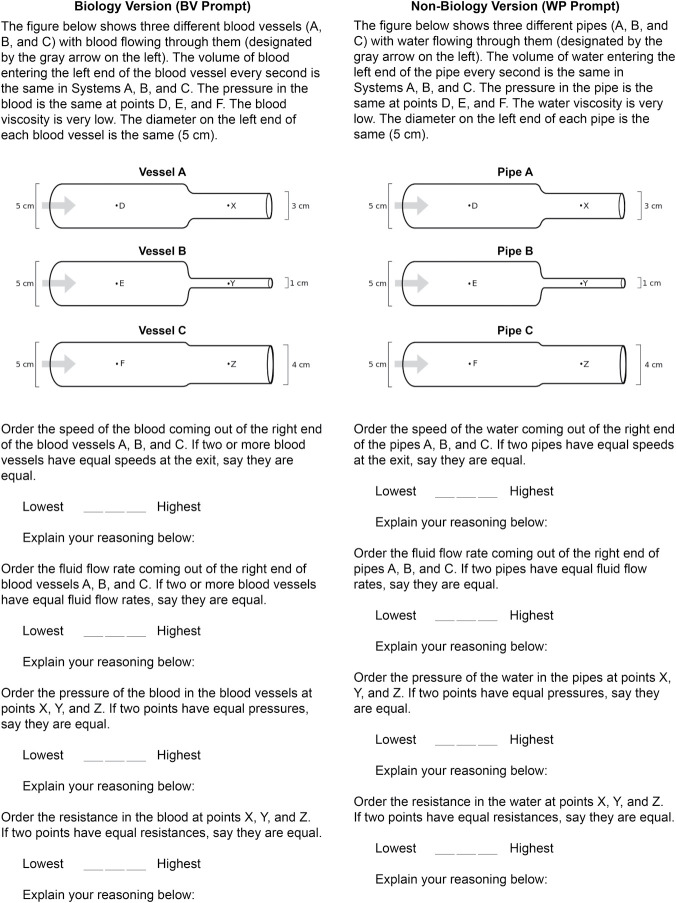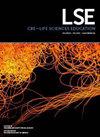情境对学生建构与推理流体动力学的影响。
IF 4.6
2区 教育学
Q1 EDUCATION, SCIENTIFIC DISCIPLINES
引用次数: 1
摘要
评估的语境特征会影响学生的想法和他们收集知识的方式。我们使用混合方法来探索表层项目上下文如何影响学生的推理。在研究1中,我们开发了一个同构调查,以捕捉学生在两个项目背景下(血管,水管)对流体动力学(横切现象)的推理,并对两个不同课程背景的学生进行调查:人体解剖学和生理学(HA&P)和物理学。我们观察到16个上下文间比较中有两个有显著差异,并且与物理学生相比,HA&P学生对我们调查的反应有显著差异。在研究2中,我们对HA&P学生进行了访谈,以探讨我们在研究1中的发现。利用资源和框架理论框架,我们发现,与回应水管版本的HA&P学生相比,回应血管版本的HA&P学生更频繁地使用目的论认知资源。此外,学生在水管推理中自发引入了HA&P内容。我们的研究结果支持认知的动态模型,并与先前的研究一致,表明项目背景影响学生的推理。这些结果也强调了教师需要认识到情境对学生横切现象推理的影响。本文章由计算机程序翻译,如有差异,请以英文原文为准。



The Impact of Context on Students' Framing and Reasoning about Fluid Dynamics.
Contextual features of assessments can influence the ideas students draw from and the ways they assemble knowledge. We used a mixed-methods approach to explore how surface-level item context impacts student reasoning. In study 1, we developed an isomorphic survey to capture student reasoning about fluid dynamics, a crosscutting phenomenon, in two item contexts (blood vessels, water pipes), and administered the survey to students in two different course contexts: human anatomy and physiology (HA&P) and physics. We observed a significant difference in two of 16 between-context comparisons and a significant difference in how HA&P students responded to our survey compared with physics students. In study 2, we conducted interviews with HA&P students to explore our findings from study 1. Using the resources and framing theoretical framework, we found that HA&P students responding to the blood vessel protocol used teleological cognitive resources more frequently compared with HA&P students responding to the water pipes version. Further, students reasoning about water pipes spontaneously introduced HA&P content. Our findings support a dynamic model of cognition and align with previous work suggesting item context impacts student reasoning. These results also underscore a need for instructors to recognize the impact of context on student reasoning about crosscutting phenomena.
求助全文
通过发布文献求助,成功后即可免费获取论文全文。
去求助
来源期刊

Cbe-Life Sciences Education
EDUCATION, SCIENTIFIC DISCIPLINES-
CiteScore
6.50
自引率
13.50%
发文量
100
审稿时长
>12 weeks
期刊介绍:
CBE—Life Sciences Education (LSE), a free, online quarterly journal, is published by the American Society for Cell Biology (ASCB). The journal was launched in spring 2002 as Cell Biology Education—A Journal of Life Science Education. The ASCB changed the name of the journal in spring 2006 to better reflect the breadth of its readership and the scope of its submissions.
LSE publishes peer-reviewed articles on life science education at the K–12, undergraduate, and graduate levels. The ASCB believes that learning in biology encompasses diverse fields, including math, chemistry, physics, engineering, computer science, and the interdisciplinary intersections of biology with these fields. Within biology, LSE focuses on how students are introduced to the study of life sciences, as well as approaches in cell biology, developmental biology, neuroscience, biochemistry, molecular biology, genetics, genomics, bioinformatics, and proteomics.
 求助内容:
求助内容: 应助结果提醒方式:
应助结果提醒方式:


